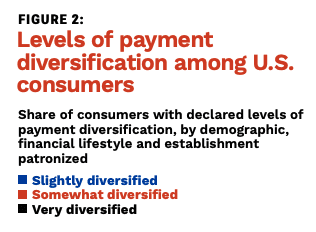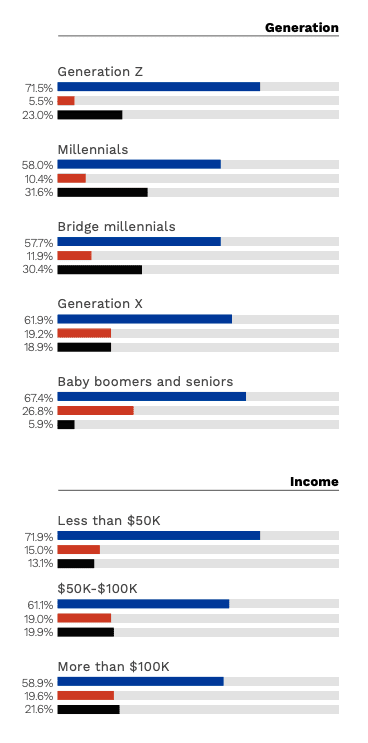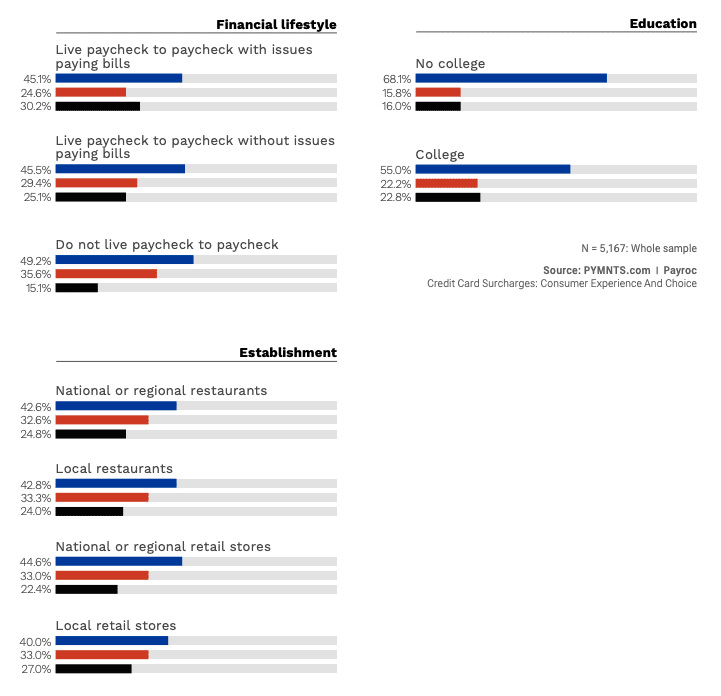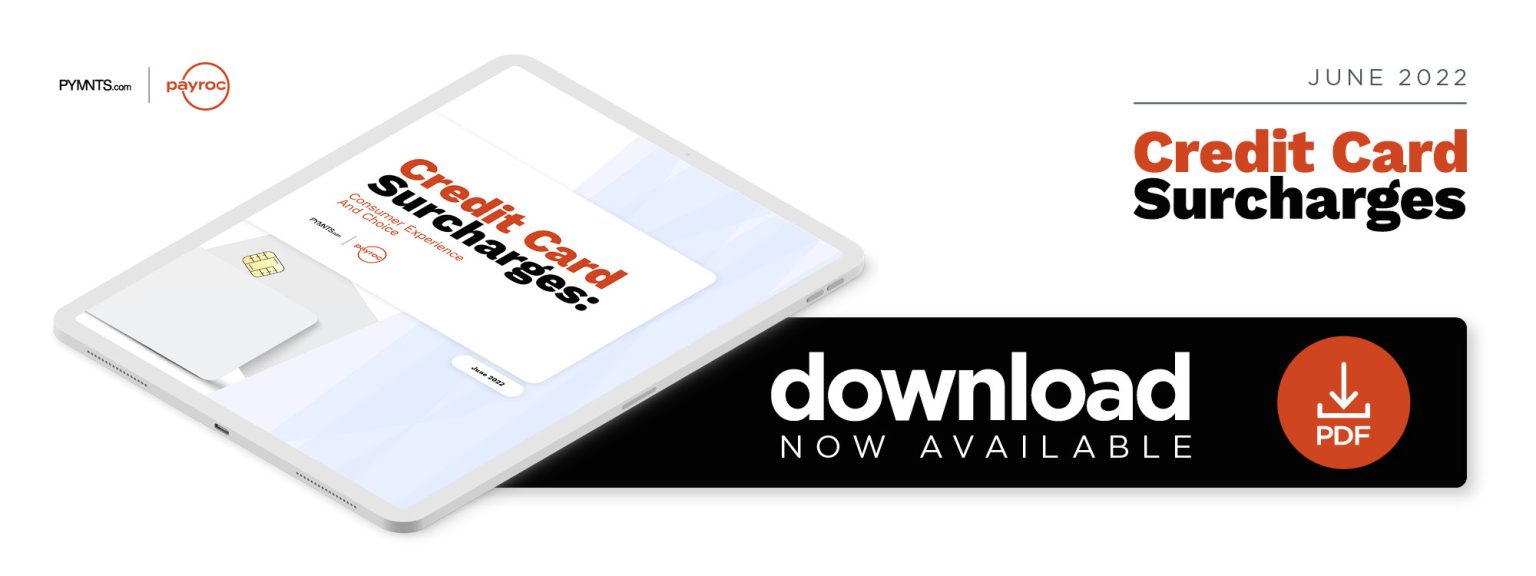One in Five US Consumers Use 7 Different Payment Methods in Stores, Restaurants

 While United States consumers can choose from a variety of payment alternatives when buying goods and services, PYMNTS’ research found that the average U.S. consumer used fewer than four payment methods in retail stores and restaurants over the past year.
While United States consumers can choose from a variety of payment alternatives when buying goods and services, PYMNTS’ research found that the average U.S. consumer used fewer than four payment methods in retail stores and restaurants over the past year.
Using statistical analysis, PYMNTS separated consumers into three groups — dubbed “payment diversification personas” — based on the range of payment methods they used in-store in the year prior to being surveyed.
 These personas were defined in “Credit Card Surcharges,” a PYMNTS and Payroc collaboration based on a survey of 2,879 U.S. credit card users.
These personas were defined in “Credit Card Surcharges,” a PYMNTS and Payroc collaboration based on a survey of 2,879 U.S. credit card users.
Get the report: Credit Card Surcharges
“Slightly diversified consumers” used on average 2.4 payment methods at the point of sale (POS) during the previous 12 months — generally cash, debit cards and credit cards. They constituted 64% of the consumers surveyed.
“Somewhat diversified consumers” used five payment methods at the POS, including such nontraditional alternatives as PayPal and gift cards. They constituted 18% of the consumers surveyed.
“Very diversified consumers” used around seven payment methods, often including digital wallets, PayPal, gift cards and buy now, pay later (BNPL). They constituted 18% of the consumers surveyed.
Unsurprisingly, consumers from younger generations and those in higher income brackets reported the highest levels of payment diversification.
Thirty-two percent of millennials, 30% of bridge millennials and 23% of Generation Z declared themselves to be very diversified — higher than the 19% of Generation X and 6% of baby boomers and seniors who said the same.
Twenty-two percent of consumers with an annual income of more than $100,000 were very diversified, compared to 20% of those earning $50,000 to $100,000 and 13% of those earning less than $50,000.


